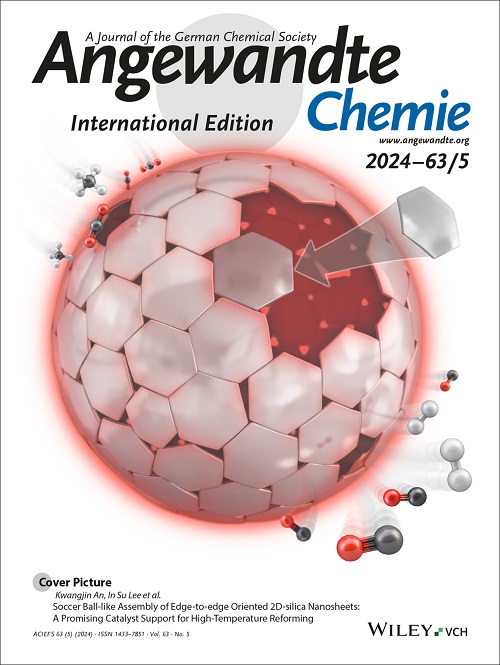Ethylene Pretreatment Enhances Ethylene Adsorption and Separation over Cu@SAPO-RHO Zeolite
IF 16.1
1区 化学
Q1 CHEMISTRY, MULTIDISCIPLINARY
引用次数: 0
Abstract
Efficient ethylene/ethane (C2H4/C2H6) separation using low-energy technologies is crucial for the chemical industry yet remains challenging due to the lack of industrially applicable adsorbents. Cu(I)-based adsorbents show significant potential; however, traditional synthesis methods often involve complex procedures or reduction steps. Herein, we report that Cu@SAPO-RHO zeolite, synthesized for the first time via a one-pot method with cyclam as the Cu(II) ligand, exhibits a remarkable C2H4/C2H6 selectivity of 22.6, a C2H4 uptake of 3.08 mmol/g, and a separation factor of 9.4 under ambient conditions by using a C2H4 pretreatment, placing it among the best-performing zeolitic materials. The C2H4 pretreatment enhances separation efficiency by partially reducing Cu(II) to Cu(I) and water resistance through the formation of carbon species during pretreatment. Structural analysis using Rietveld refinement reveals that Cu2+ ions occupy the corners of elliptical single 8-rings (s8r). X-ray absorption near-edge structure (XANES) analysis confirms a reduction in Cu oxidation state, while X-ray photoelectron spectroscopy (XPS) corroborates the partial conversion of Cu(II) to Cu(I). Periodic density functional theory (DFT) calculations further reveal that Cu(I) interacts more strongly with C2H4 than Cu(II). With its straightforward synthesis and enhanced performance through C2H4 pretreatment, Cu@SAPO-RHO zeolite presents a promising solution for industrial-scale C2H4/C2H6 separation.求助全文
约1分钟内获得全文
求助全文
来源期刊
CiteScore
26.60
自引率
6.60%
发文量
3549
审稿时长
1.5 months
期刊介绍:
Angewandte Chemie, a journal of the German Chemical Society (GDCh), maintains a leading position among scholarly journals in general chemistry with an impressive Impact Factor of 16.6 (2022 Journal Citation Reports, Clarivate, 2023). Published weekly in a reader-friendly format, it features new articles almost every day. Established in 1887, Angewandte Chemie is a prominent chemistry journal, offering a dynamic blend of Review-type articles, Highlights, Communications, and Research Articles on a weekly basis, making it unique in the field.

 求助内容:
求助内容: 应助结果提醒方式:
应助结果提醒方式:


